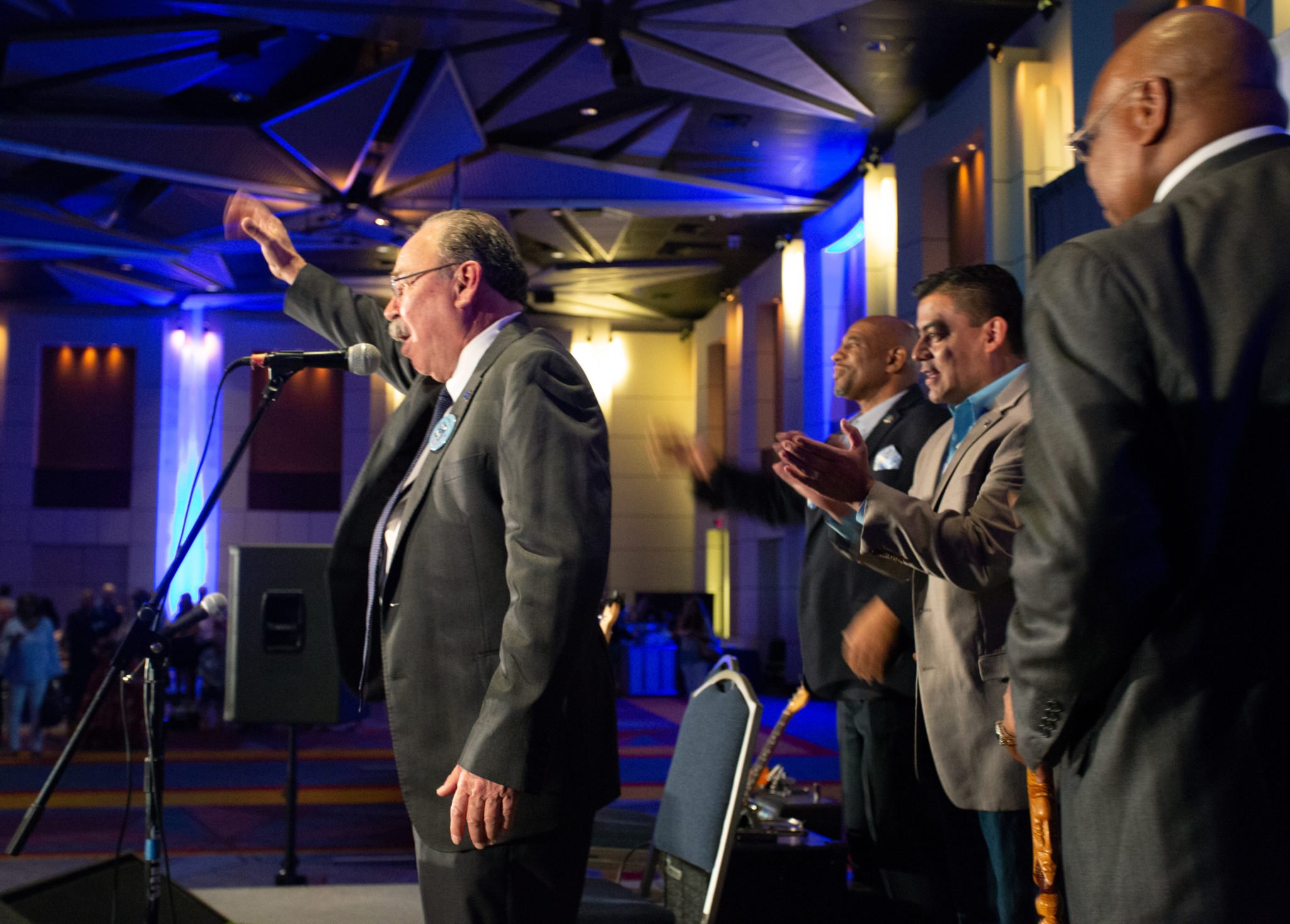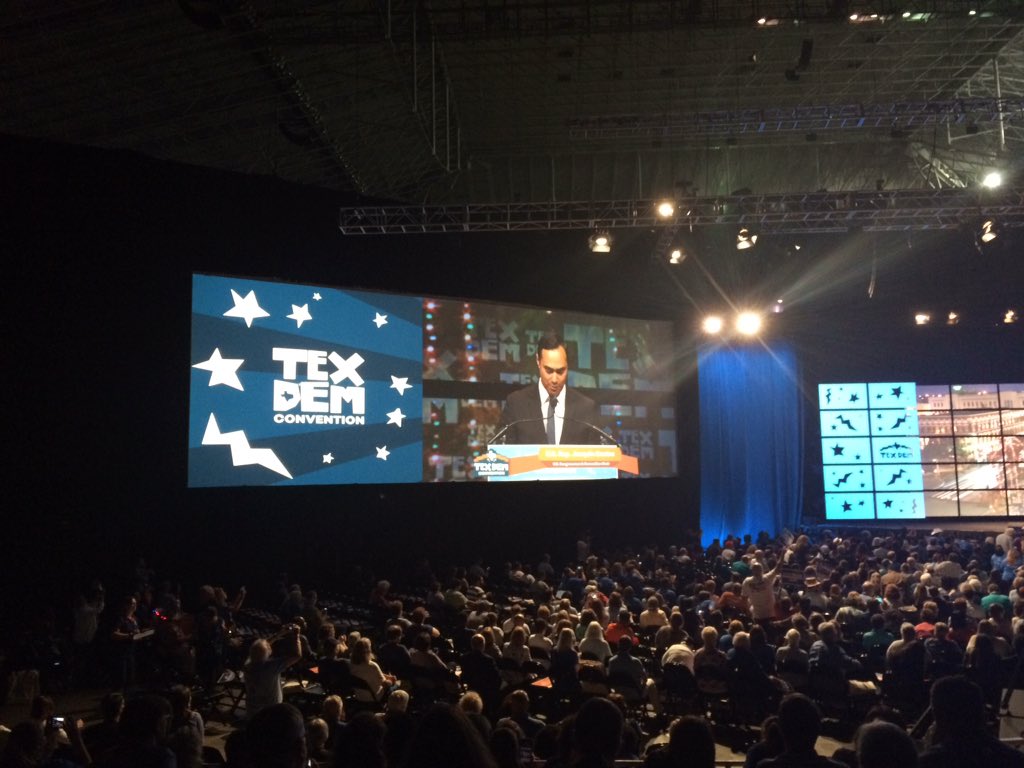
‘There’s More of Us’: Texas Democrats Once Again Counting on Hispanic Turnout
Democrats have long struggled to turn out Latino voters in the state — and the struggles continue in 2018.

Above: Party Chair Gilberto Hinojosa speaks at the 2018 Texas Democratic Convention.
4.8 million. That’s the number on the minds of those attending the myriad meetings for Latino Democrats — the Progressive Hispanic Democrats, the Mexican American Caucus, Tejano Democrats, the Hispanic Caucus — on the first day of the Texas Democratic convention here in Fort Worth.
There are 4.8 million Hispanic voters eligible to vote in November. It’s the second-largest Hispanic voting bloc in the country, second only to California, and rapidly growing.
“I will tell you raza, I will tell you Democrats, that this happened because we didn’t go vote. There’s more of us than there is of them,” Texas Democratic Party Chair Gilberto Hinojosa told members of the Mexican American Caucus. “Por chingos” — a shitload more, he added. Talking about family separation along the border, Hinojosa declared, “[Republicans] are doing this to our people and they are doing this to our people because we have allowed it. Because we have not gone to vote, raza.”
For years, the Texas Democratic Party — in fact, the national Democratic Party — has tied much of its political hopes and dreams to the idea that the demographic destiny of a quickly diversifying electorate would inevitably translate to political power. One problem: Democrats have failed to turn out Hispanic voters in large enough proportions to flip purple states like Florida, Arizona, and the liberal holy grail, Texas. In 2016, just under 41 percent of the state’s Hispanic eligible voters turned out, only slightly more than the 39 percent turnout in the 2012 presidential election.
Flash forward to 2018, a midterm election year when Latino turnout — and turnout across the board — typically falls off. State Democrats are desperate to minimize that problem. Party strategists hope that Beto O’Rourke, a Senate candidate from El Paso, and gubernatorial candidate Lupe Valdez, the daughter of Mexican migrant workers, will galvanize Hispanic voters to turn out throughout South Texas and beyond.
Activists are also emphasizing the need to get out and talk face to face to voters about the anti-immigrant rhetoric and policies of the Trump administration and the Texas Republican Party, from family separation to Senate Bill 4. What is unclear is precisely how the party’s plan is to do that outreach.
“We have Our Revolution but we need a Hispanic revolution,” said Cinia Clarich Montoya, a Democrat from Nueces County who is running to be the party’s Hispanic Caucus chairwoman. “It’s gonna take everything. Grassroots outreach, social media and Spanish radio and TV.”
That requires resources and a robust state party infrastructure, neither of which currently exist for Texas Democrats. Julián Castro, the former mayor of San Antonio seen by some as the Latino face of the Democratic future, is somewhat optimistic, predicting that Hispanics in 2018 will vote at rates at least greater than the 2014 midterms.

“The scale is not quite there, but we’re getting there,” Castro told the Observer, citing a $2.5 million nationwide initiative (if $2.5 million can qualify as a nationwide initiative) from the national Democratic Party to turn out minority communities and $7 million that the group Voto Latino announced it will spend between now and 2020 to target Hispanic voters, including in Texas.
According to a Texas Tribune report: the Fort Worth area is the epicenter of growth: “Among the state’s largest counties, Tarrant County was home to the most rapid growth of Hispanic residents. Since 2010, Hispanics have expanded their presence in Tarrant by almost 23 percent, easily outpacing their overall growth rate in the state of about 18 percent,” the report found.
There’s a lot of Democratic potential in Tarrant County if they’re able to reach the growing Latino population. Sylvia Rodriguez, who is a deputy voter registrar here in Tarrant County, said she’s doing pop-up voter registration drives at restaurants around town and trying to do as much as possible to boost registration among Latinos. “If they don’t know [that they are able to register to vote], then they’re not going to act on it,” she says.
One problem: She says she is one of only a few Spanish-speaking voter registrars in the area.


